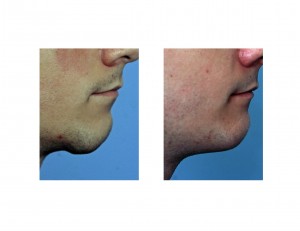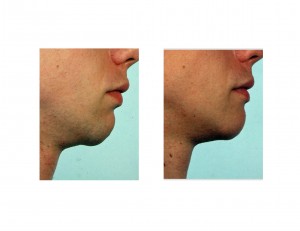The chin and its appearance in profile plays an important role in how the face is perceived. The chin is, of course, composed of how much the bone portion of it protrudes and how thick and tightly adherent the attached soft tissues are. Together they make the chin profile. While bony deficiencies of the chin are common and easily improved with an implant, loose or sagging soft tissues require a more thoughtful approach.
Sagging soft tissues of the chin, also known as a witch’s chin deformity (as uncomplimentary as that is) or chin ptosis, is the result of a loss of attachments. One cause is that of aging, particularly in the person who wears dentures, where the jawbone has resorbed down to the point of loss of the upper mentalis muscle attachments. In the younger patient, however, the most common reason is that of implant removal and/or replacement from a prior chin augmentation procedure. The chin tissues have been lifted off to initially place the implant and its subsequent removal has created a loss of muscle attachments…and then it just sags off of the bone. This situation should not be a surprise as it is analogous to that of breast implants and envisioning what happens if they are simply removed later.


The chin ptosis that occurs from an implant removal poses different considerations. Does the patient still want increased chin projection or not. If not, the a submental tuck-up approach as above is done. Often a scar already exists under the chin and it is merely lengthened a bit. If more chin projection is still desired, then a chin osteotomy (osteoplastic genioplasty) may be done and is the preferred technique in my Indianapolis plastic surgery practice. Rather than using an implant again, the bone is moved (which helps support the sagging soft tissues) and the mentalis muscle and chin tissues is reattached on top and behind it to the fixation plate that is needed. A chin implant can still be used in this case but a limited submental tuck-up will likely still be needed.
Dr. Barry Eppley
Indianapolis, Indiana


